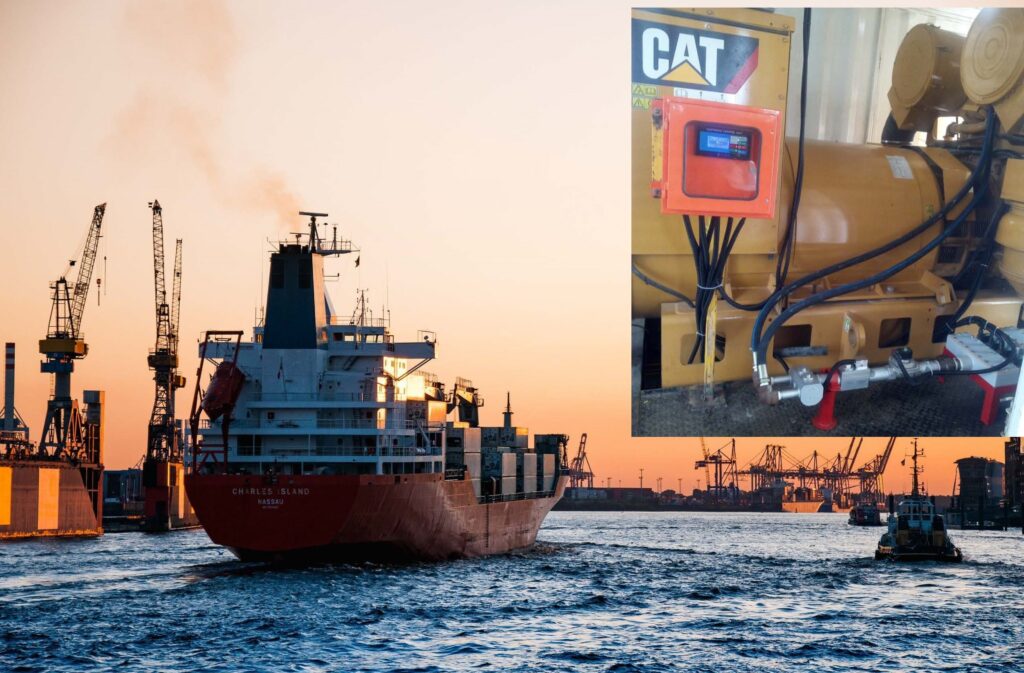ADVANTAGES:
- Fuel Cost Savings
- Fuel Flexibility
- Run-time extension, especially in times of natural disasters
- Emissions reductions
- Use of ancillary gas sources (field gas, flare, landfill)
THE SYSTEM
The Dual Fuel System operates by blending diesel fuel and natural gas in the combustion chamber. This is achieved using a pilot-ignition, fumigated gas-charge design, whereby natural gas is premixed with engine intake-air and delivered to the combustion chamber via the air-intake valve. The air-gas mixture is ignited when the diesel injector sprays a reduced quantity of diesel fuel into the chamber. This diesel “pilot” acts as the ignition source for the primary air-gas combustible. Because of the high auto-ignition temperature of natural gas, the air-gas mixture will not ignite during the compression stroke, as there is not enough heat present to facilitate combustion.
Because the existing air-intake and diesel injection systems are utilized by the Dual Fuel System, no engine modifications are required for installation.
All OEM engine specifications for injection timing, valve timing, compression ratio, etc., remain unchanged after installation. The Dual Fuel System requires a low pressure natural gas supply (approximately 2 – 5 psi) with a flow rate of approximately 8 scfh/kW (i.e. 500 kW=5,000 scfh).
PERFORMANCE
Installation of the Dual Fuel System in no way compromises the performance of the generator relative to the rated load of the machine. A generator with a 1000 kW stand-by rating which has been retrofitted to Dual Fuel will still provide the same power in both 100% diesel and Dual Fuel modes.Similarly, there is no decrease in generator load response or stability while operating in either fuel mode.
